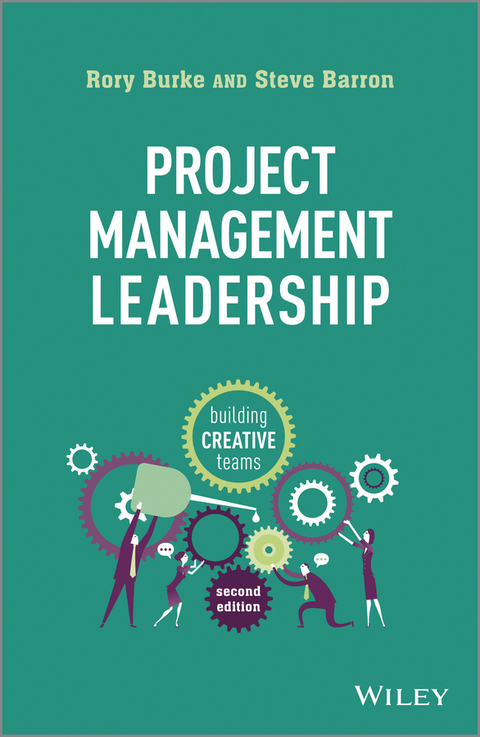Description
Efnisyfirlit
- Cover
- Title
- Copyright
- Foreword
- Authors’ Notes
- Chapter 1: Introduction to Project Management Leadership
- How to Use This Book
- 1. History of Project Management
- 2. Project Manager’s Portfolio of Skills
- 3. Project Management Body of Knowledge
- 4. Project Lifecycle
- 5. Project Management Leadership
- Chapter 2: Project Governance and Ethics
- 1. Project Lifecycle
- 2. Project Governance
- 3. Project Ethics
- Chapter 3: Project Leadership BoK
- 1. What is Project Leadership?
- 2. Project Vision and Inspiration
- 3. Leadership Vision vs. Project Lifecycle
- 4. Project Strategy
- 5. Empowerment and Self-Control
- 6. Control Freaks
- 7. Collaboration
- 8. Success
- Chapter 4: Project Organization Structures
- 1. What is a Project Organization Structure?
- 2. Functional Organization Structure
- 3. Matrix Organization Structure
- 4. Pure Project Organization Structure
- Chapter 5: Leadership Behaviors
- 1. What are Leadership Behaviors?
- 2. Competent Project Leadership
- 3. The Logic of Failure
- 4. Covey’s Seven Habits
- 5. Effective and Unsuccessful Leadership Behaviors
- Chapter 6: Leadership Theories and Styles
- 1. Leadership Theories
- 2. Action Centered Leadership
- 3. Situational Leadership
- 4. Authority
- 5. Emotional Intelligence (EI) Leadership Styles
- 6. Linking Leadership Styles to Projects
- Chapter 7: Power to Influence
- 1. What is Power to Influence?
- 2. Matrix Organization Structure
- 3. Responsibility–Authority Gap
- 4. Power to Influence
- 5. Power and Influence vs. Project Lifecycle
- 6. Formal Authority
- 7. Coercive Power
- 8. Reward Power
- 9. Expert Power
- 10. Charisma Power
- 11. Communication Power
- 12. Leadership Power
- Chapter 8: Resistance to Change
- 1. What is Resistance to Change?
- 2. Why is There Resistance to Change?
- 3. What is the Rationale for Resisting the Change?
- 4. What Can the Leader do About Resistance to Change?
- 5. Ideas About How Change Happens
- 6. Everett Rogers – Diffusion of Innovations
- 7. Conclusions
- Chapter 9: Emotional Intelligence
- 1. Emotional Intelligence Domains
- 2. The Four Emotional Intelligence Domains
- 3. Leaders Need Emotional Intelligence (EI)
- 4. Perception of Emotional Competence
- Chapter 10: Leadership vs. Management
- 1. Leadership vs. Management
- 2. Dealing with People
- 3. Entrepreneurship Skills
- Chapter 11: Working with Stakeholders
- 1. Who is a Project Stakeholder?
- 2. Stakeholders vs. Project Lifecycle
- 3. Stakeholders and Interested Parties
- 4. Networking
- Chapter 12: Project Teams
- 1. Project Teams vs. Project Lifecycle
- 2. Why Companies Use Project Teams
- 3. The Individual’s Purpose for Team Membership
- 4. Team Leader’s Ability
- 5. Team Charter
- 6. Why Teams Win
- 7. Why Teams Fail
- Chapter 13: Teams vs. Groups
- 1. The Difference Between Groups and Teams
- 2. Moving from Being a Group to Being a Performing Team
- 3. Working Groups or Teams?
- 4. How Can we Achieve Significant Performance Results?
- 5. Dangers of High Group Cohesion: Groupthink
- Chapter 14: Team Roles
- 1. Summary of Team Roles
- 2. Belbin’s Team Roles
- 3. Avoiding Confusion Between Similar Types
- 4. Belbin’s Team Styles in a Leadership Context
- 5. Combining Primary and Secondary Styles
- 6. Team Roles Surfacing at Different Stages of a Project
- 7. How to Use Team Role Models
- Chapter 15: Team Development Phases
- 1. Team Focus
- 2. Team Performance
- 3. Forming Phase
- 4. Storming Phase
- 5. Norming Phase
- 6. Performing Phase
- 7. Maturing and Declining Phases
- Chapter 16: Team-Building Techniques
- 1. What is Team Building?
- 2. Level One: Interpersonal Team Building
- 3. Level Two: Team Roles
- 4. Level Three: Shared Vision
- 5. Level Four: Task Focused
- 6. Outdoor Team Building
- Chapter 17: Coaching and Mentoring
- 1. Coaching Helps us Get Better at What we Already Do
- 2. Coaching Skills
- 3. Mentoring
- 4. The Relationship
- 5. Feedback
- Chapter 18: Negotiation
- 1. Win–Lose Strategy
- 2. Win–Win Strategy
- 3. Lose–Lose Strategy
- 4. Negotiation Tactics
- 5. Networking Skills
- 6. Bargaining
- 7. Dispute Resolution
- Chapter 19: Motivation
- 1. Motivation
- 2. Motivation Cycle
- 3. Herzberg’s Motivation and Hygiene Theory
- 4. McClelland’s Motivational Needs Theory
- 5. Maslow’s Hierarchy of Needs
- 6. Motivation and Leadership Style
- 7. Seven Rules of Motivation (for project managers)
- Chapter 20: Delegation
- 1. Reasons for Delegating
- 2. What Can be Delegated?
- 3. Delegation: Simple Rules for Success
- 4. Delegation Contract
- 5. Problems with Delegation
- Chapter 21: Communication
- 1. Communication Theory
- 2. Communication Plan
- 3. Project Meetings
- 4. Teamwork vs. Communication
- Chapter 22: Conflict Resolution
- 1. Conflict in the Workplace
- 2. Dealing with Conflict
- 3. Drama Triangle
- 4. Transactional Analysis
- Chapter 23: Problem Solving
- 1. Types of Problems
- 2. The Nature of Problems
- 3. Problem-Solving Process
- 4. Define Objectives and Problem Definition
- 5. Identify Problems or Opportunities
- 6. Gather Data and Present Information
- 7. Identify a Range of Solutions
- 8. Blocks to Problem Solving
- 9. Solutions and Options
- Chapter 24: Decision Making
- 1. The Decision-Making Process
- 2. Decision-Making Continuum
- 3. Quality Function Deployment (QFD)
- 4. Decision Tree Analysis
- 5. Decision-Making Pitfalls
- 6. Communicate the Decision
- Appendix: Lost at Sea
- Glossary
- Index
- End User License Agreement







Reviews
There are no reviews yet.